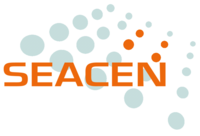Running Projects
More information on our activities can also be found in our research BLOG spatialaudio.net.
Signal Processing for Reproduction of Room Acoustics

Within the DFG research unit Simulation and Evaluation of Acoustic Environments (SEACEN) this project considers the authentic reproduction of captured acoustic scenes as an essential building block for the evaluation of room acoustics. It aims at developing a unified view on authentic reproduction of captured room acoustics. The existing approaches will be formulated in an unified framework, their properties will be evaluated and improved algorithms will be developed. The considered techniques consist typically of three main building blocks: sound field capture, extrapolation and synthesis. This project focuses on Wave Field Synthesis and higher-order Ambisonics as loudspeaker-based, and binaural reproduction as headphone-based techniques.
- Funded by Deutsche Forschungsgemeinschaft (DFG)
- Duration: 4/2011 -- 4/2014; 5/2014 -- 4/2017
- Contact: Sascha Spors
Finished Projects
Analysis of holophonic reproduction by binaural signal processing
This project aims at the development of methods for instrumental quality evaluation of multichannel reproduction techniques. A binaural signal processing model is used to predict single attributes and finally the perceived quality. Listening experiments are used to derive the perceptual attributes of different auditory scenes in order to develop a scene database which is used for evaluation. The differences to stereophony are also considered, for instance the differences in terms of perceived coloration.
- Funded by Deutsche Forschungsgmeinschaft (DFG)
- Joint project with Prof. Dr.-Ing. Alexander Raake
- Duration: 09/2010 -- 09/2013
- Contact: Hagen Wierstorf
Microphone Arrays for Room Acoustics and Auralization
Microphone arrays have come into the focus of interest for spatial audio recording applications. The methods of sound field analysis deliver a very abstract and general physical description of the sound field in terms of solutions to the multidimensional acoustical wave equation. The adaption of the array data to reproduction systems (especially binaural synthesis) will be investigated. Sound field analysis using microphone arrays can be used for a detailed analysis of room acoustics. The adavantages of the new methods compared to the classical methods in room acoustics are investigated and evaluated.
- Funded by Bildungsministerium für Bildung und Forschung (BMBF)
- Project lead: Prof. Dr.-Ing. Christoph Pörschmann
- Partners: Technische Universität Berlin, IOSONO GmbH, Westdeutscher Rundfunk
- Duration: 10/2011 -- 9/2014
- Contact: Benjamin Bernschütz
